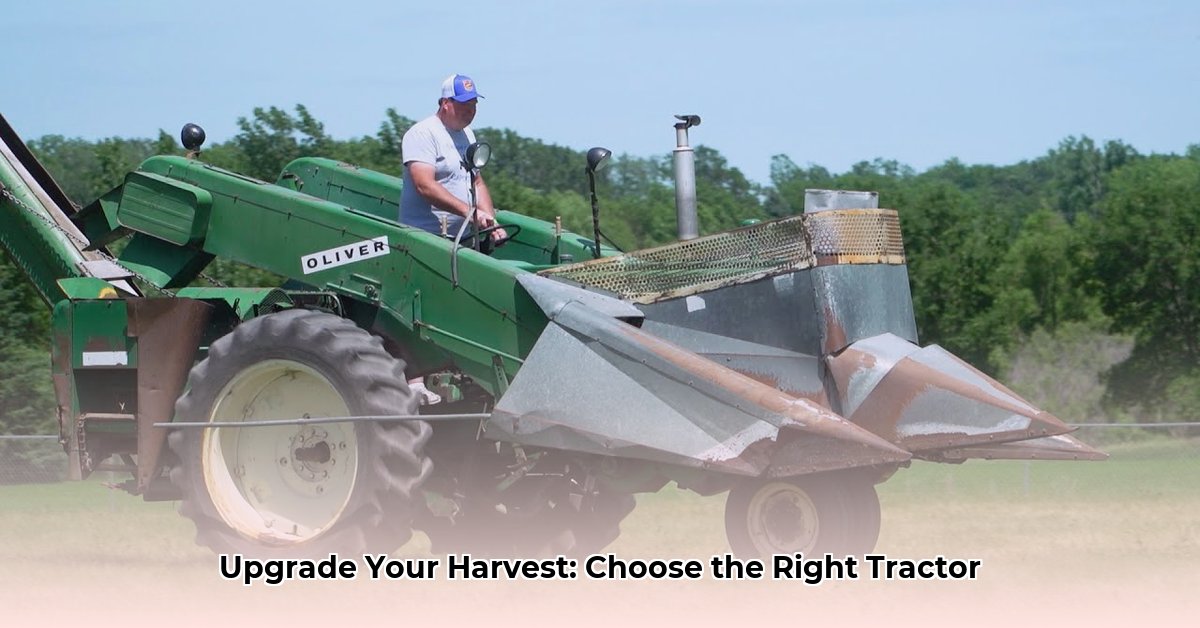
Corn harvesting is a critical period for farmers, demanding efficiency and minimizing downtime. The right corn picker tractor can significantly impact your yield and profitability. This guide provides a comprehensive overview of the market, helping you choose a machine tailored to your specific needs. We’ll cover types of corn pickers, factors to consider in your purchasing decision, operational best practices, and sustainability considerations. For more information on corn planter tractors, check out this helpful resource.
Understanding the Corn Picker Tractor Market: A Dynamic Landscape
The corn picker tractor market is undergoing rapid transformation. Farmers face increasing pressure to maximize yields while managing labor shortages and controlling costs. This necessitates a shift towards more efficient, user-friendly, and sustainable machinery. Manufacturers are responding with increasingly automated systems and designs focused on ease of maintenance. A key trend is the integration of advanced technologies to improve harvesting speed and reduce the environmental impact. Do you see these efficiencies reflected in your bottom line?
Types of Corn Pickers: A Detailed Comparison
Corn pickers are categorized by automation level, size, and power source, each suited to different farm operations and scales.
Automation Level:
- Manual: Requires significant manual labor, often suitable for smaller operations with ample workforce.
- Semi-Automatic: Automates some tasks, reducing labor demands and offering increased efficiency.
- Fully Automatic: Minimizes manual intervention, maximizing efficiency and reducing reliance on labor. This is often the ideal choice for large-scale operations.
Size:
Picker size should directly correlate with the acreage of your farm. Oversized machinery can lead to unnecessary expenses and inefficiencies in smaller fields. Conversely, a smaller machine will struggle with vast acreage.
Power Source:
- Diesel: Remains the dominant power source, offering robust performance but potentially higher fuel consumption and emissions.
- Electric: Emerging as a sustainable alternative, offering reduced emissions and potentially lower operating costs, albeit with limitations in battery technology and charging infrastructure. However, advancements in battery technology are rapidly improving their viability.
- Hybrid: Combines diesel and electric power, aiming to balance the performance of diesel engines with the environmental benefits of electric motors.
The following table compares some representative models (note: specifications may vary based on manufacturer and model year):
| Model | Harvesting Speed (rows/hour) | Picking Efficiency (%) | Fuel Efficiency (gallons/acre) | Power (HP) | Maintenance (Ease) | Manufacturer |
|---|---|---|---|---|---|---|
| Acme X500 | 8 | 95 | 12 | 250 | Medium | Acme Machinery |
| Beta Harvestor 75 | 10 | 92 | 15 | 300 | High | Beta Ag Solutions |
| Gamma-Pro 3000 | 12 | 98 | 10 | 400 | Low | Gamma Industries |
| Delta 100 | 6 | 90 | 18 | 150 | Easy | Delta Equipment |
Choosing the Right Corn Picker: A Strategic Investment
Choosing a corn picker requires a careful assessment of your specific farm needs and resources. Consider the following factors:
1. Field Size and Topography: Match the machine's capacity and maneuverability to your field conditions. A large, powerful machine excels on vast, flat fields. However, a smaller, more agile model is better suited to smaller farms with uneven terrain.
2. Budget: Include initial purchase price, ongoing maintenance, fuel costs, and potential repairs in your budget calculation. A higher initial investment in a high-efficiency model can often yield long-term savings.
3. Labor Availability: Fully automated pickers reduce labor needs but have a higher initial cost. Manual or semi-automatic models require more human intervention, making them suitable for farms with abundant labor.
4. Maintenance Requirements: Prioritize machines with simple maintenance procedures and readily available parts. Minimize downtime through preventative maintenance and easy access to service.
5. Sustainability: Consider fuel efficiency, emissions, and overall environmental impact. Look for machines designed to minimize your ecological footprint. Reducing your environmental impact often also translates to reduced operating costs.
Operational Aspects and Safety: Ensuring Peak Performance
Safe and efficient operation is crucial to maximize the lifespan and productivity of your corn picker tractor.
1. Thorough Training: Ensure all operators are fully trained and understand the machine's operation and safety procedures.
2. Regular Maintenance: Adhere to a strict maintenance schedule to prevent breakdowns and ensure optimal performance. Regular inspections, lubrication, and timely repairs are essential to maximize the longevity of your equipment.
3. Safety Precautions: Always prioritize safety. Use appropriate personal protective equipment (PPE) and adhere to all operational safety guidelines.
Conclusion: Optimizing Your Harvest Through Informed Decisions
Selecting the right corn picker tractor is a critical investment. By considering your farm’s unique context -- field size, labor availability, budget, and sustainability goals -- you can choose a machine that enhances productivity and profitability. Remember that the right equipment, paired with proper maintenance and operational practices, is key to a successful and efficient corn harvest.